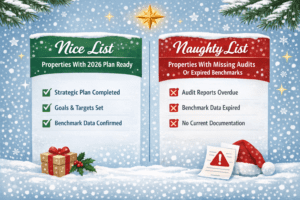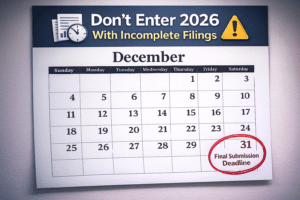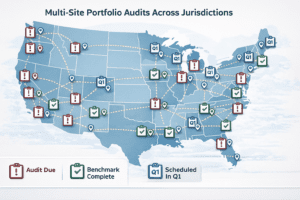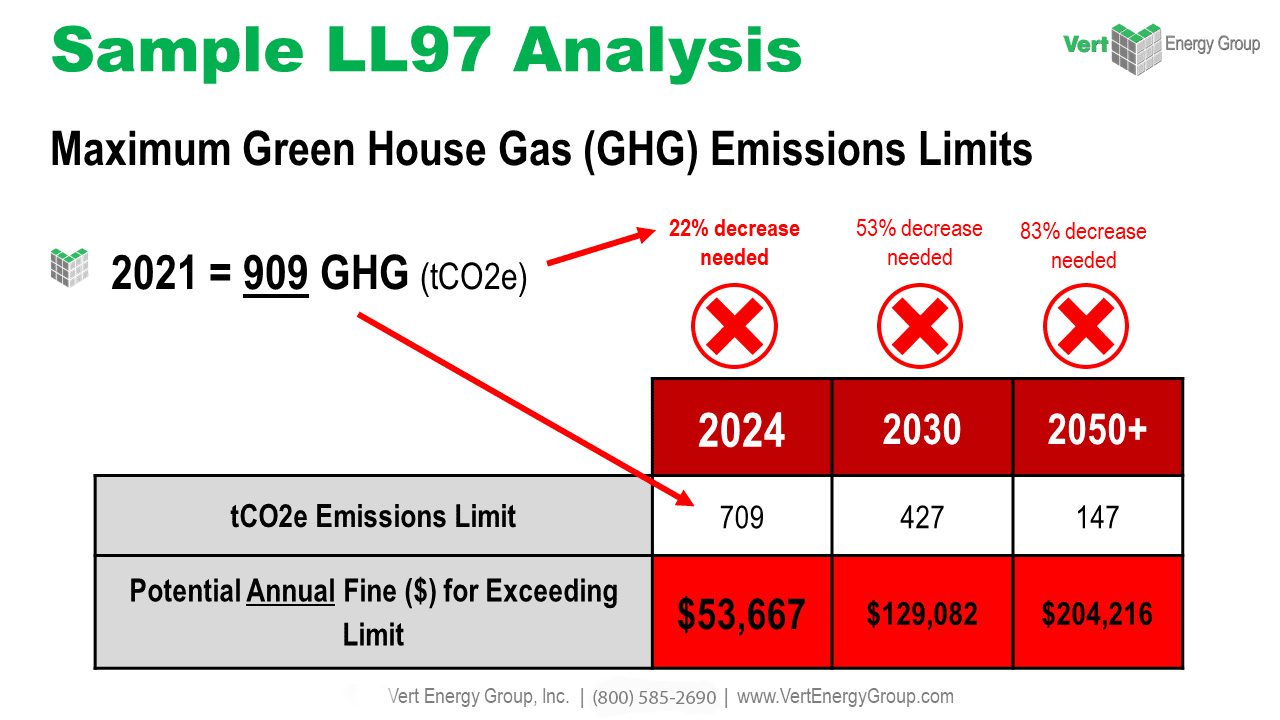Springing into Compliance: April’s Guide to Environmental Stewardship
Welcome to the April edition of VertPro® Insights. This month, we're springing into action with essential guidance on meeting crucial compliance deadlines and navigating the latest environmental regulations.
Our cover story, "Deadlines, Deadlines, Deadlines," breaks down the must-know details for energy benchmarking and audits. Whether you’re in New York or navigating similar requirements elsewhere, we provide strategies to handle these obligations smoothly. We also delve into new GHG emission restrictions that are taking effect in Boston, Washington State, and D.C., arming you with insights to ensure your operations remain ahead of compliance curves. Discover the importance of water audits in our feature article, outlining who needs them and why they are critical in today’s environmental landscape. Enhance your VertPro® experience with our concise 15-minute walkthrough video, designed to help you efficiently manage your account and sustainability tasks. Finally, "April Showers Bring May Flowers" examines how shifting climate patterns might be impacting traditional springtime blooms.
Embrace this month’s insights to navigate the complexities of sustainability and compliance with confidence and foresight.
Too many buildings miss their energy deadlines—don’t be one of them.
Picture this: It’s a hectic Monday morning and your to-do list is a mile long. Amid the flurry of emails and meetings, a nagging thought stops you in your tracks—the energy compliance deadline for your building is just around the corner. Suddenly, the race against the clock isn’t just about your daily tasks but about avoiding steep fines and operational hiccups.
Why wait for the last-minute stress? Let’s tackle your building’s energy benchmarks and audits today, ensuring compliance, efficiency, and peace of mind.
Why it Matters:
For commercial buildings, annual energy benchmarking is a must, tracking your property’s energy consumption and comparing it to peers. Typically, these deadlines are in the spring or early summer, varying by city. For instance, cities like New York and San Francisco implement immediate fines for late submissions.
Energy audits, required every 5 to 10 years based on your location, are comprehensive reviews that lead to crucial efficiency upgrades. Cities like Boston and Los Angeles are strict about these periodic checks. Missing these could not only be costly but could also tarnish your building’s market standing.
The Perks of Timely Compliance:
Being proactive doesn’t just dodge penalties; it uncovers significant savings by:
- Detecting inefficiencies early.
- Reducing utility costs with timely energy upgrades.
- Implementing improvements that align with tenant turnovers and budget cycles.
How to Stay Compliant and Stress-Free:
- Know Your Dates: Check your city’s guidelines for specific deadlines.
- Assign Responsibilities: Designate a team member to manage data collection for benchmarking and coordinate audit preparations.
- Seek Professional Help: Engage with energy consultants who can streamline the entire process from data gathering to final submissions, ensuring you meet all local requirements and discover cost-saving measures.
Take Action Now:
Staying on top of these requirements ensures you run efficient, compliant, and cost-effective buildings. Begin your preparations now to avoid last-minute rushes and ensure your commercial properties are performing at their best. Reach out to our energy consultants today for expert guidance and support—stay compliant, save money, and eliminate deadline worries.
The rules of the game are changing. As cities step up their efforts to cut down on greenhouse gas emissions, your commercial properties are right in the thick of it. It’s not just about avoiding fines anymore; it’s about seizing a golden opportunity to lead the charge towards a more sustainable future. If you’re managing properties today, understanding and adapting to these changes isn’t just important—it’s essential.
What’s Changing?
New York City’s Local Law 97 pushes for dramatic reductions in building emissions, setting tough penalties for non-compliance.
Boston’s BERDO 2.0 and Washington, D.C.’s BEPS Program both demand rigorous reporting and continuous improvements in building performance.
Washington State is broadening its reach with the Clean Buildings Performance Standard, compelling larger buildings to meet aggressive energy efficiency benchmarks.
Impact on Your Business:
The implications of these new laws extend beyond the threat of fines. They are about transforming properties into models of sustainability. This transformation not only mitigates environmental impact but also enhances the marketability and longevity of your assets.
How to Adapt and Thrive:
- Assess Your Portfolio: Start by getting a clear picture of where each property stands in terms of energy use and emissions.
- Align With Timelines: Each regulation has its own schedule. Sync your compliance plans with these timelines to ensure you meet all deadlines.
- Invest Smartly: Upgrades might seem costly, but they are investments in the future competitiveness of your properties. Prioritize high-impact changes like energy-efficient systems and better insulation.
- Keep Your Eyes Open: Regulatory landscapes are dynamic. Regular updates can help you adjust your strategies in time.
- Leverage Expertise: The complexity of emissions regulations can be daunting. Partnering with environmental consultants can provide clarity and direction.
Why Wait? Start Now!
The journey toward compliance is not just about adhering to laws—it’s about leading the charge in your industry. By proactively adjusting to these emissions standards, you not only future proof your properties but also position them as attractive, sustainable choices for tenants and investors alike.
Act today by reaching out for expert guidance to navigate these changes effectively. Let’s make sure your properties are not just compliant but leading the way in sustainability.
If you’ve had an energy audit, you might be overdue for one that saves water instead.
Water—often overlooked, always essential. While you’ve been closely monitoring energy usage, water might be silently slipping away, unnoticed and unchecked. But why wait for a crisis to discover you’ve been using more than necessary? It’s time to dive into the world of water audits and see how they can transform your property management approach.
Unveiling the Mystery of Water Audits
Unlike their energy counterparts, water audits don’t just spotlight conservation; they reveal losses that directly impact your bottom line. Through a meticulous examination of your water flow—from sources, through fixtures, to drainage, these audits map out precisely where your water goes, how it’s used, and crucially, where it’s wasted.
Is a Water Audit Right for My Property?
If your property portfolio includes buildings with extensive water uses, such as cooling systems, large green spaces, or recreational facilities, it’s likely time for a water audit. Local regulations might already require it, especially in regions facing water scarcity. These audits are not merely a formality they are a critical tool for proactive management.
A New Approach to Water Management
Here’s how shifting your perspective on water audits can bring unexpected benefits:
Discovery and Diagnostics: Identify inefficiencies that, once corrected, can lead to significant savings. It’s not just about fixing a leak; it’s about fine-tuning your entire water system.
Regulatory Alignment: Stay ahead of the curve by aligning with local water use regulations. As these laws tighten, your proactive steps will set you apart from the competition.
Sustainability Leadership: Enhance your property’s appeal by demonstrating a commitment to sustainable practices. This isn’t just good for the planet, it’s what tenants increasingly expect.
Starting Your Water Audit Journey
Step into the Current: Begin with a basic assessment of your current water use and compare it against potential benchmarks.
Engage Experts: Bring on board specialists who are not just auditors but partners in water management.
Implement and Innovate: Use the audit’s findings to innovate. This could mean installing advanced water recycling systems or adopting new water-saving technologies.
Turning the Tide with Strategic Water Management
Initiating regular water audits does more than comply with laws; it propels your properties into a future where efficiency and sustainability are at the forefront. This proactive approach not only saves water and money but also positions your property as a leader in responsible management.
Interested in making waves with your water management strategy? Let’s talk about how our expert audits can open new opportunities for your properties today.
Welcome to the future of property management with VertPro! Simplify your compliance journey from the very first step. Designed for commercial property managers and owners, VertPro® transforms complex regulatory tasks into straightforward, manageable processes. Let’s dive into how this intuitive platform can enhance your operational efficiency and profitability.
As you’ve seen, VertPro® is not just a tool—it’s your ultimate partner in compliance and property management. Ready to elevate your management game and stay ahead of the curve? Sign up for VertPro® today and experience the ease of streamlined compliance and optimized property performance firsthand. Join the revolution in property management—start with VertPro®.
As the saying goes, April showers bring May flowers but nowadays, those showers might just turn into unexpected storms, thanks to climate change. The once-predictable rhythm of spring is becoming anything but typical, posing new challenges and opportunities for commercial property managers.
Navigating the New Norm
Every year, the effects of climate change grow more apparent, altering not just our seasons but also the demands on our properties. From increased flooding risks to fluctuating temperatures, your traditional management strategies may no longer suffice. It’s time to adapt, ensuring your properties aren’t just surviving these changes but thriving.
Weathering the Storm: Practical Steps for Property Managers
Flood Defenses: Increase your property’s resilience by upgrading drainage systems and installing flood barriers. Simple fixes like cleaning gutters and enhancing landscaping to manage water flow can prevent costly water damage.
HVAC Upgrades: As temperatures swing, a robust heating and cooling system is essential. Consider energy-efficient models and smart thermostats to maintain comfort without skyrocketing costs.
Resilient Landscaping: opt for drought-resistant plants and native species that require less water and maintenance, boosting your property’s sustainability and curb appeal.
Structural Health Checks: Regular inspections can catch early signs of climate-related wear and tear. Pay special attention to your property’s foundation, roof, and insulation to prevent long-term damage.
Emergency Preparedness: Equip your properties with a solid emergency plan that includes clear communication channels and safety protocols. Make sure your team is trained and ready to respond to extreme weather events.
Turning Challenges into Opportunities
By embracing innovative solutions and sustainable practices, you can not only safeguard your investment but also enhance your property’s appeal. Initiatives like solar panels, rainwater harvesting, and advanced insulation not only mitigate the impacts of climate change but also draw environmentally conscious tenants.
Adapt and Lead
Climate change is reshaping property management. Staying ahead means moving beyond mere compliance to proactive adaptation. Implement these strategies to protect your properties and position yourself as a leader in a market that values foresight and sustainability.
As we adjust to this new climate reality, remember: the actions you take today define your success tomorrow. Embrace the change, enhance your resilience, and lead by example in sustainable property management.
